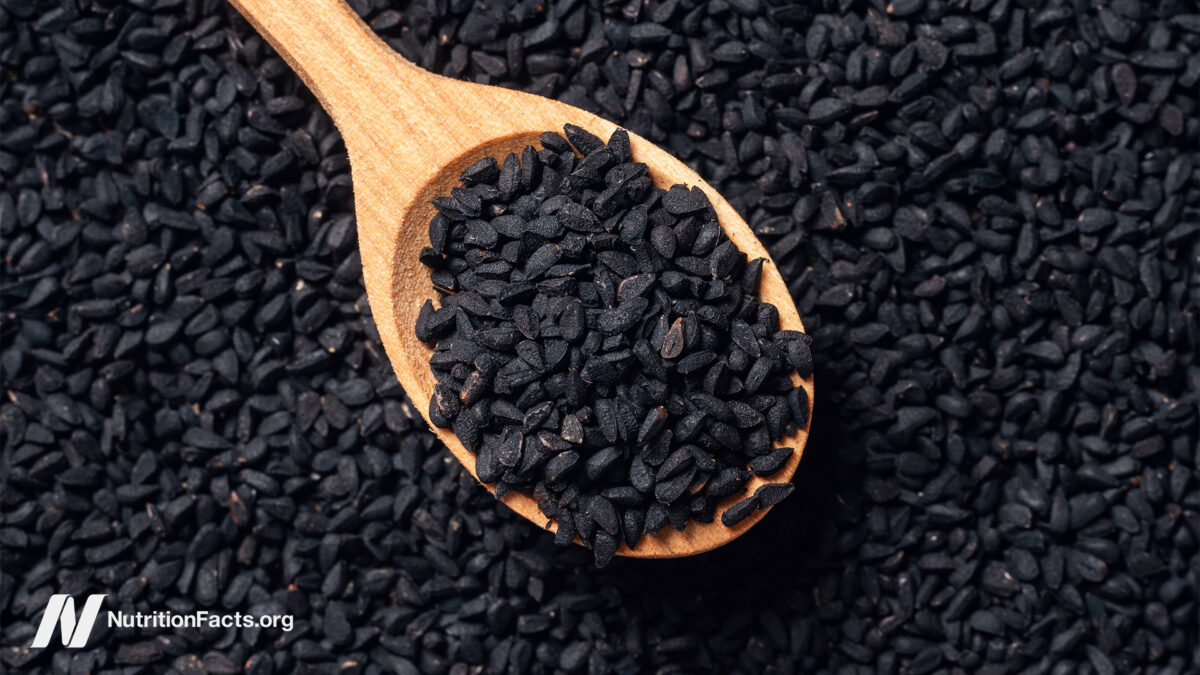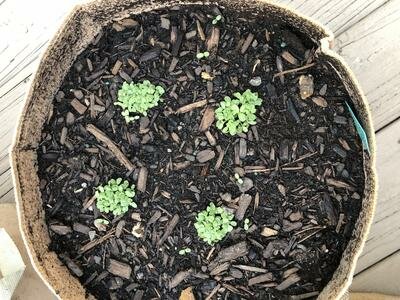How to Show Up With Your Whole Heart
Living wholeheartedly means unapologetically embracing who we are, accepting our imperfections, and celebrating our strengths and uniqueness, writes cardiologist Dr. Jonathan Fisher in this excerpt from his new book, Just One Heart. The post How to Show Up With...

Dr. Suzie Brown knows about broken hearts. She knows what makes hearts fail and what helps them heal. As a cardiologist at Nashville’s Vanderbilt University Medical Center, Dr. Brown specializes in advanced heart failure and transplantation. Beyond the anatomy and physiology, she embodies the power of living wholeheartedly. Her patients and colleagues know her for her passion, purpose, and presence.
At one point during her training, she faced the challenge of caring for patients during long nights on call while also dealing with the demands of a teething infant at home. These situations were physically and emotionally draining. Nevertheless, she remained steadfast in her commitment to her patients, driven by her unwavering sense of purpose as a healthcare professional.
The pressures and expectations of her profession often forced her to sideline her feelings and needs, pushing her to put on a mask of invulnerability. The emotional toll of constantly caring for others, often at the expense of her well-being, began to wear on her.
She felt drained after completing her cardiology training. During her last year of cardiology fellowship in 2006, she penned her first song to process a personal breakup. Music quickly became more than a hobby. It became a source of restoration and renewal.
Dr. Brown’s journey toward living wholeheartedly illustrates her evolution in handling the emotional challenges of her demanding profession. Initially suppressing her emotions to meet professional expectations, she realized the importance of embracing her vulnerabilities and passions beyond medicine—a profound affirmation of wholeness. This transformation made music her emotional outlet and a solace in her life.
Living From a Place of Wholeness
Author, educator, and activist Parker Palmer emphasizes in his book A Hidden Wholeness: The Journey Toward an Undivided Life that living wholeheartedly is about embracing the natural wholeness we are born with. For me, it means living with authenticity, vulnerability, purpose, passion, and presence while fully engaging in our lives and doing what we love with all our hearts. Wholehearted people live intentionally and embrace it all, not wishing away any parts or moments of their lives.
Wholehearted people live intentionally and embrace it all, not wishing away any parts or moments of their lives.
Living wholeheartedly also means embracing our whole selves unapologetically, accepting our flaws and weaknesses, and celebrating our strengths and uniqueness. It means being true to ourselves, even when difficult, and being proud of ourselves.
Embracing our wholeness means living and leading with presence, authenticity, purpose, and passion. But obstacles often block our path to living wholeheartedly. Let’s explore and overcome them together.
Embracing our wholeness means living and leading with presence, authenticity, purpose, and passion. But obstacles often block our path to living wholeheartedly.
Be Present in an Age of Distraction
Presence, the foundation of wholehearted living, is a necessary first step in this journey. It allows us to connect deeply with ourselves and our surroundings, creating a solid base from which authenticity, purpose, and passion can flourish. In our digital age, where attention is scarce, the challenge to stay present is ever-present.
Professor of Psychology and Director of Contemplative Neuroscience at the University of Miami, Amishi Jha, provides insights on distraction and practices to strengthen our attention in her book Peak Mind: Find Your Focus, Own Your Attention, Invest 12 Minutes a Day. She explains that distraction arises from both external and internal sources. Externally, we grapple with digital distractions from our devices and the curated realities of social media, environmental distractions from noisy and busy surroundings, and the pressures of time that rush and stress us. Internally, thoughts, emotions, and physical sensations compete for our attention. Fatigue, stress, anxiety, and negative thoughts often keep us “stuck in our heads” and disconnected from the present moment.
These distractions often plunge us into an “autopilot mode,” where we lose touch with the richness of our immediate experiences, leading to feelings of emptiness and unfulfillment. While sometimes valuable for routine tasks, this mode can be detrimental when it numbs us from fully engaging with life. Research by Matthew Killingsworth and Daniel Gilbert underscores the importance of attention to our overall happiness, indicating that less distraction correlates with higher happiness levels. However, this relationship is complex. Mindfulness and presence are part of a broader spectrum of factors that contribute to well-being.
Several strategies, including mindfulness practices, boundary setting with our devices, self-care through adequate rest, nutrition, and exercise, and cultivating strong social relationships and self-kindness, help us take steps toward improving our focus and reducing reliance on autopilot.
Living with Authenticity, Purpose, and Passion
In tandem with the struggle to remain present is the quest for living authentically, with purpose and passion. Bronnie Ware’s insights from palliative care patients, as shared in her 2012 book The Top Five Regrets of the Dying: A Life Transformed by the Dearly Departing, illuminate the joy and belonging that stem from authenticity. Ware’s work caring for patients in their final weeks of life reveals the most common regrets of the dying, with one prevailing lament being, “I wish I’d had the courage to live a life true to myself, not the life others expected of me.” This sentiment underscores the importance of authenticity and serves as a poignant reminder of the value of living in alignment with our true selves rather than conforming to the expectations set by others.
In our quest for authenticity, vulnerability plays a pivotal role. It involves the courage to show our true selves, embrace our imperfections, and risk exposing our flaws and vulnerabilities to others for genuine connection and belonging. Brené Brown’s research on vulnerability highlights its importance for authenticity, connection, and wholehearted living. However, it’s important to note that risking exposure should be a thoughtful and intentional choice, not a constant requirement. Vulnerability should be exercised in contexts that align with your values, support personal growth, and contribute to meaningful connections. It is important to balance being open and authentic while safeguarding our boundaries and well-being.
It is important to balance being open and authentic while safeguarding our boundaries and well-being.
Discovering and integrating our passion and purpose into our lives is another essential step toward a life of meaning and enthusiasm. Viktor Frankl, psychiatrist and Holocaust survivor, dedicated his life to understanding the human quest for meaning. His seminal 1959 work, Man’s Search for Meaning, explores the depths of human suffering and resilience in the most extreme circumstances. Frankl explains how individuals find purpose despite adversity and highlights the fundamental importance of this search for meaning in our lives. This process, while challenging, leads to a transformative journey filled with growth, gratitude, and the realization of a life that resonates with our deepest selves. As Howard Thurman eloquently stated, we should focus on what makes us come alive since this is what the world ultimately needs.
While the challenges of modern life—from the constant distractions to the pressures to conform—are formidable, pursuing a life lived with presence, authenticity, purpose, and passion is both possible and deeply rewarding. It requires a conscious effort to navigate the distractions surrounding us, connect deeply with our true selves, and find and follow our unique path in life. Though fraught with challenges, this journey leads to a richer, more fulfilling existence.
Healing Pathways to Living Wholeheartedly
Being present and fully engaged with ourselves and the world demands more than mindfulness. It requires acknowledging and accepting every facet of our emotional being. Working toward emotional balance and peace in our internal world paves the way for navigating the complexities of our external environment with authenticity and compassion.
Embracing our entire being, including our strengths, vulnerabilities, and everything in between can be likened to the Japanese art of Kintsugi, which repairs broken pottery with gold lacquer. In this art form, the flaws and breaks are not merely repaired but are celebrated, their golden seams symbolizing resilience and transformation. Similarly, we can turn our vulnerabilities into strengths by acknowledging and integrating our emotional wounds and past experiences.
Dr. Gabor Maté, known for his work on addiction, childhood development, and trauma, notes that certain traits—otherwise known as coping styles—magnify the risk for illness by escalating the probability of chronic stress. One common trait is a reduced capacity for expressing our authentic emotions, noting that “this crucial learning either materializes or is overlooked during childhood.” He shares stories demonstrating that when individuals can’t effectively express their emotions, these emotional experiences can turn into potentially harmful biological events and chronic physical diseases.
Confronting and processing past wounds is essential to healing, integration, and growth. When we talk about our past experiences with a therapist or trusted friend and allow ourselves to feel our emotions without judgment, we can start to heal. This process of emotional reconciliation can lead to profound change and transformation. Emotional agility is another essential part of this process. According to psychologist Susan David, it’s about “being flexible with your thoughts and feelings so that you can respond optimally to everyday situations.” When emotionally agile, we can better cope with stress, build healthy relationships, and achieve our goals.
Internal Family Systems (IFS) therapy, conceptualized by American psychologist and family therapist Richard Schwartz, helps us understand and accept the different “sub-personalities” within us. These sub-personalities, each with their roles and functions, include parts of us that may appear unfavorable. IFS’s “core Self” represents our true, balanced essence, characterized by calmness and clarity. By learning to listen to and integrate these sub-personalities, we can align them with our “core Self,” leading to greater emotional balance and self-awareness.
The ABCs of Wholeness
Once we’ve developed the ability to direct our attention at will and notice when it is wandering, clarify our purpose and passion, and commit to inner healing, we can bring our whole hearts to any situation using simple techniques. However, staying present isn’t always easy. Life’s stresses, past traumas, and worries about the future often pull our minds in many different directions.
In my research and on my journey of healing and growth, I have found three steps to living wholeheartedly:
A—Accepting life as it is as a catalyst for growth and transformation
B—Balancing feelings and thoughts
C—Cultivating connection: strengthening our inner resources
I call these the ABCs of wholeness. Three broad groups of strategies can help us shift from stress to ease, from fear to courage, and from avoidance to connection. When challenges arise, we can follow the three steps in order or practice whichever stage will help us most.
Explore how each of these strategies applies in your life with the questions below, whether by writing about them in a journal, discussing them with someone close to you, or simply reflecting on them quietly:
Journaling Prompts for Accepting Life As It Is:
The psychologist Carl C. Rogers wrote, “The curious paradox is that when I accept myself just as I am, then I can change.” What comes to mind for you when you read the word acceptance? What do you find difficult to accept about yourself at this time? About your life? About other people? What would it look like for you to practice accepting one difficult thing? How would you feel waking up in the morning? How might you move differently through the world?Journaling Prompts for Balancing Feelings and Thoughts:
Wholehearted living encourages us to balance our thoughts and feelings (our internal narratives) with the realities of external situations. Can you think of a challenge you faced in the past that caused you emotional pain or led you to take counterproductive actions? What alternative perspectives or explanations might have been available in this situation? Do they align with the reality of the situation?How might this shift in perspective have changed how you felt or thought about the challenge?Journaling Prompts for Cultivating Connection and Strengthening Inner Resources:
The philosopher James Allen wrote, “Think of the mind like a garden, which can be wisely tended or ignored. Regardless, it will yield results.” Imagine your unhelpful or negative thoughts and habits are like weeds in your mind’s garden. What kinds of weeds are present in your garden today? The same goes for “plants” that you want in your garden. What thoughts and actions help you to nurture qualities of wholeness, like mindfulness, gratitude, and compassion?Choose one positive quality to give some extra TLC this week. What small, daily action can you take to water and care for this quality, enabling it to thrive in your life?One Harmonious Whole
Dr. Suzie Brown embodies living wholeheartedly by balancing her life as a cardiologist and a musician. By 2010, her talents outside the world of cardiology were widely recognized, securing her a spot as a semi-finalist in the International Songwriting Competition and winning her a “Best of Philly” accolade.
For Dr. Brown, music is a testament to the power of embracing oneself unapologetically. Her journey of self-awareness and self-acceptance has enriched her connections with her patients, ensuring they experience what it truly means to live and heal wholeheartedly.
Living wholeheartedly demands a conscious effort to stay present, embrace our authentic selves, and deeply engage with our life experiences. This approach leads to a more productive and fulfilling life and connects us more profoundly with our true essence and world.
Check out the first two excerpts from Just One Heart, exploring two other heart-healthy traits: steadiness and wisdom.
Excerpted with permission from Just One Heart: A Cardiologist’s Guide to Healing, Health, and Happiness by Dr. Jonathan Fisher. © Dr. Jonathan Fisher. Published by Manuscripts Press (2024).

 Astrong
Astrong 































